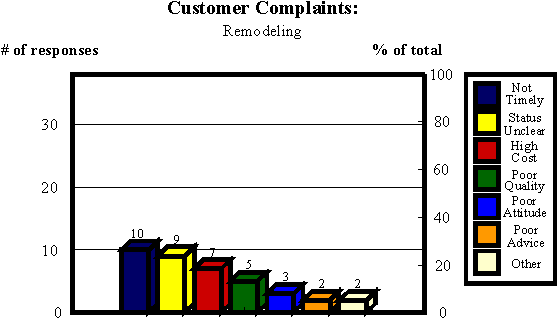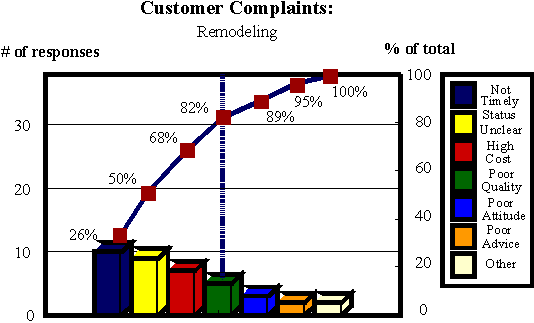Below is an example of the above construction of steps 1-5 of a Pareto Chart.

Next, draw a vertical line at roughly 80% (see below). This line indicates, according to the Pareto Principle that categories Not Timely, Status Unclear, High Cost, and Poor Quality account for about 80% of all stakeholder complaints. If the team puts its efforts into these categories, they will get the greatest return for their effort.

(click on the image to take you home)
